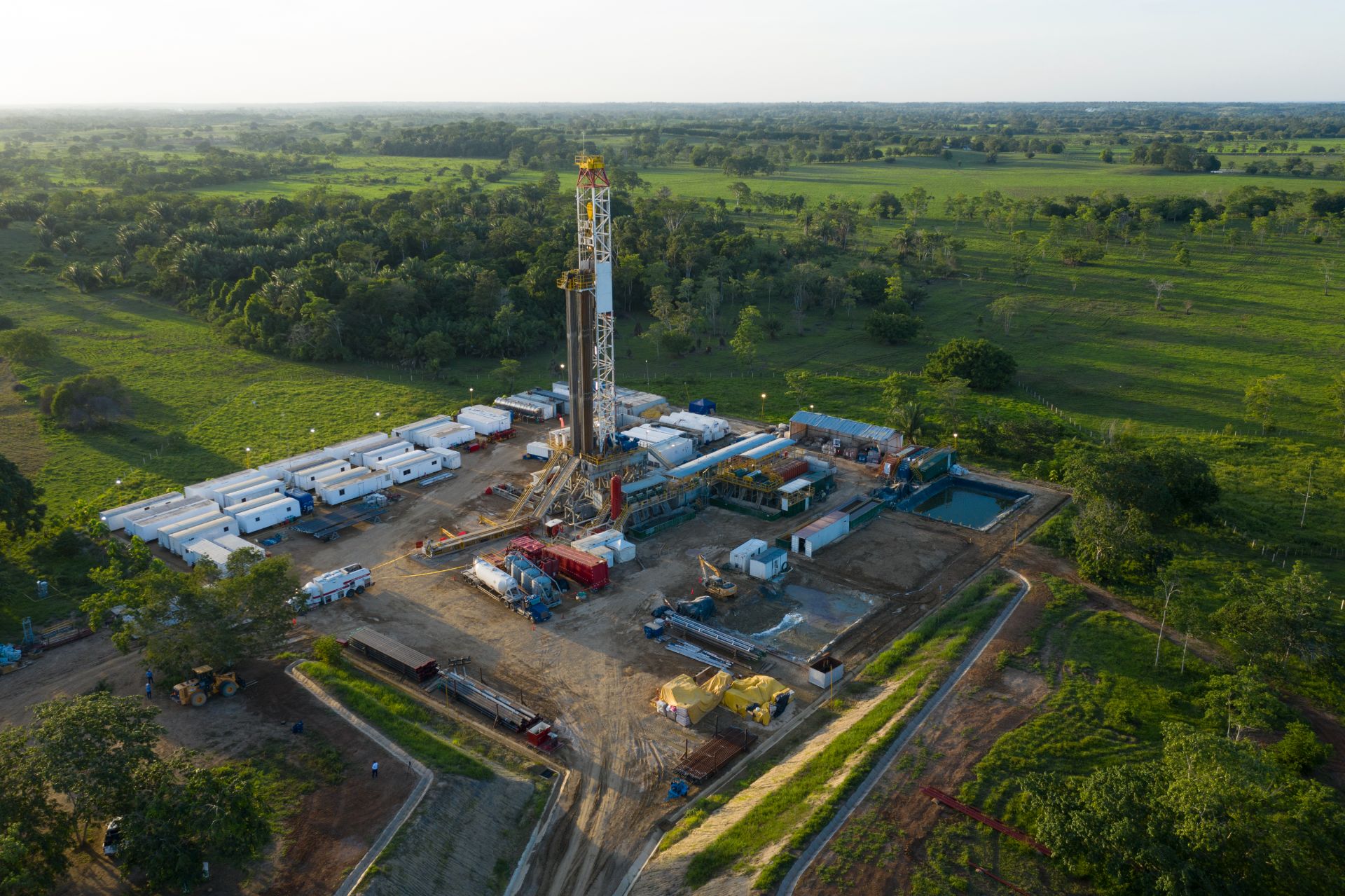Geology Overview
Much of Canacol’s highly prospective acreage position is in the Lower Magdalena Valley (LMV) basin situated in the northwestern part of the country, which has a long productive history. The first gas discovery was made in 1943. Subsequent exploration activity has resulted in the discovery of at least 20 significant gas fields with more than 20 BCF of gas each, and numerous smaller accumulations.
The LMV basin is a fore-arc basin related to the convergence of the Pacific and South American crustal plates with associated subduction and strike-slip deformation. The basin is underlain by continental crust and bounded to the west by the Sinu-San Jacinto accretionary prism. The primary reservoir in the basin consists of thick continental to marginal marine clastics of the Eocene to Lower Miocene-aged Cienaga de Oro (“CDO”) Formation deposited in an active trans-tensional setting directly on basement. Regionally, the CDO is overlain by thick marine shales of the Porquero Formation, which provide an excellent top seal lithology. Low-stand shoreface sands are present in the marine shale sequence, and represent a secondary shallower reservoir target with significant potential in the Porquero. Across the basin, the source of the predominantly dry gas is generally ascribed to source rocks in the Porquero shale and CDO coals.
Part of Canacol’s successful gas strategy was to recognize the opportunity presented by the gas prone southern part of the LMV basin, given the likelihood of strong growth in demand for dry gas in local markets. The dry nature of the produced gas allows sales via the gas distribution grid with only minimal processing, there by reducing capital and operating cost requirements, and supporting the high rates of return on investment that Canacol has historically achieved with its gas developments. Another key to Canacol’s success has been the successful application of modern 3D seismic interpretation to resolve trap geometries that largely represent horst blocks and faulted three-way anticlines. Exploration risk is further mitigated by the successful application of amplitude versus offset (AVO) methods as a direct hydrocarbon indicator (DHI), which has resulted in a significant increase in exploration drilling success in both of the company’s main play types in the CDO and Porquero Formations.

Aerial view of Ocarina Drilling
Timing has been key to the company’s success. Canacol entered the gas business as Colombia’s large conventional gas fields approached terminal decline in their production life, at a time when the country’s demand for gas was steadily increasing. Since 2012, this emerging nation-wide gas supply deficit has supported strong pricing as well as increasing demand for Canacol’s natural gas.
The Corporation has built a material 100% operated exploration position in the Middle Magdalena Valley (MMV) basin situated in central Colombia, consisting of five E&P Contracts covering 525,000 net acres within a new deep conventional gas exploration play. These blocks are located near a major TGI gas pipeline system, with spare capacity, which would allow rapid commercialization of any potential discoveries.
The basin is a prolific intermontane basin with a long history of conventional hydrocarbon production. Basin development began in the Triassic with rifting and separation of North and South America along the Andean subduction zone. The back-arc sedimentary succession was dominated by easterly-sourced clastics which represent the primary conventional sandstone reservoirs in the basin. In a more distal setting, the basin is dominated by marine shale and carbonates including several source rock intervals. The most prolific of these, the Turonian-Coniacian-aged La Luna Formation and its lateral equivalents, are the basin’s major source of oil and natural gas. Marine deposition in the basin was terminated in the Maastrichtian by the accretion of the Andean Western Cordillera. Subsequent Tertiary-aged sedimentation was dominated by non-marine clastics derived from more local important orogenic events related to the uplift of the Miocene-aged Andean Eastern Cordillera. Historical discoveries in the basin (1.9 billion barrels and 2.5 TCF) have largely been from Tertiary clastic reservoirs in conventional structural traps sourced from the Cretaceous shales, although there are a number of wells with shows, tests, and production from the Cretaceous source rock interval.
Canacol’s acreage in the basin represents a new core area with conventional natural gas potential. Over the next years, the company will embark on an extensive exploration program including investigative geological studies, 3D seismic acquisition and exploratory drilling on the new blocks.
